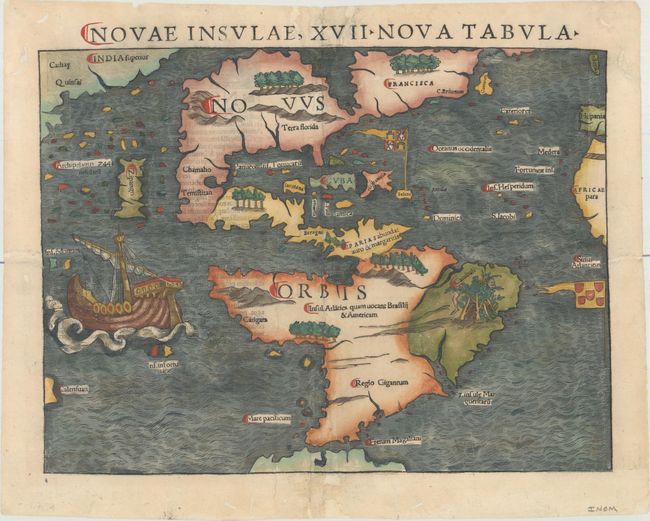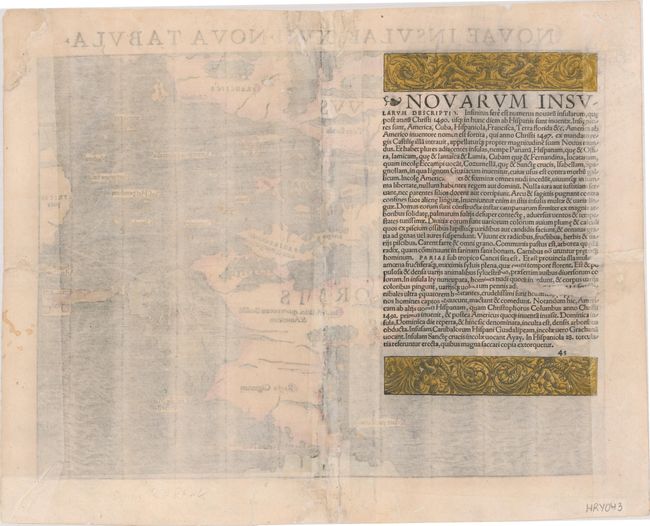Catalog Archive


Auction 175, Lot 45
First State, First Issue of One of the Most Important 16th Century Maps of the New World
"Novae Insulae, XVII Nova Tabula", Munster, Sebastian
Subject: Western Hemisphere - America
Period: 1540 (published)
Publication: Geographia
Color: Hand Color
Size:
13.4 x 10 inches
34 x 25.4 cm
Download High Resolution Image
(or just click on image to launch the Zoom viewer)
(or just click on image to launch the Zoom viewer)

